Chapter 5 The Structure and Function of Large





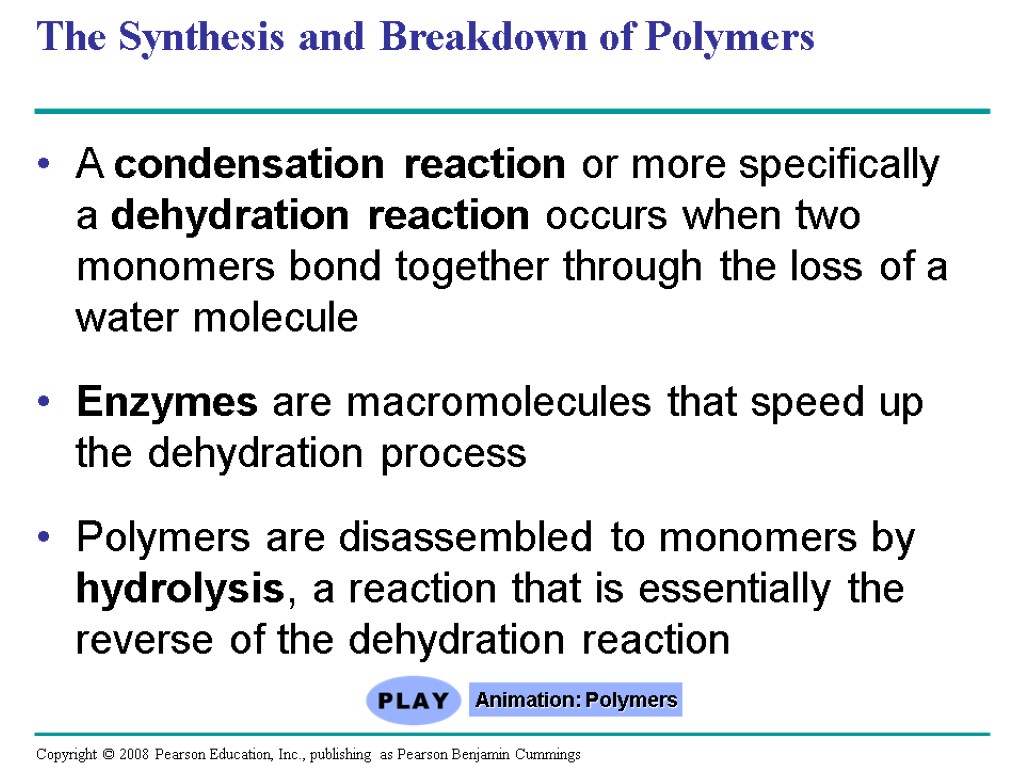

















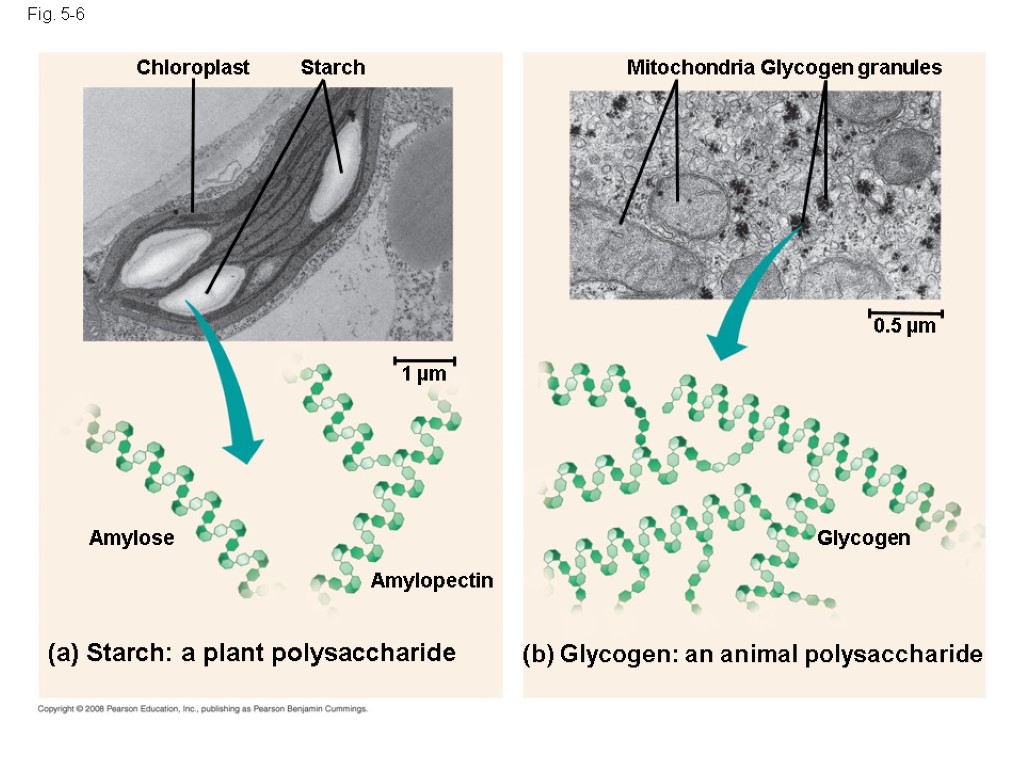






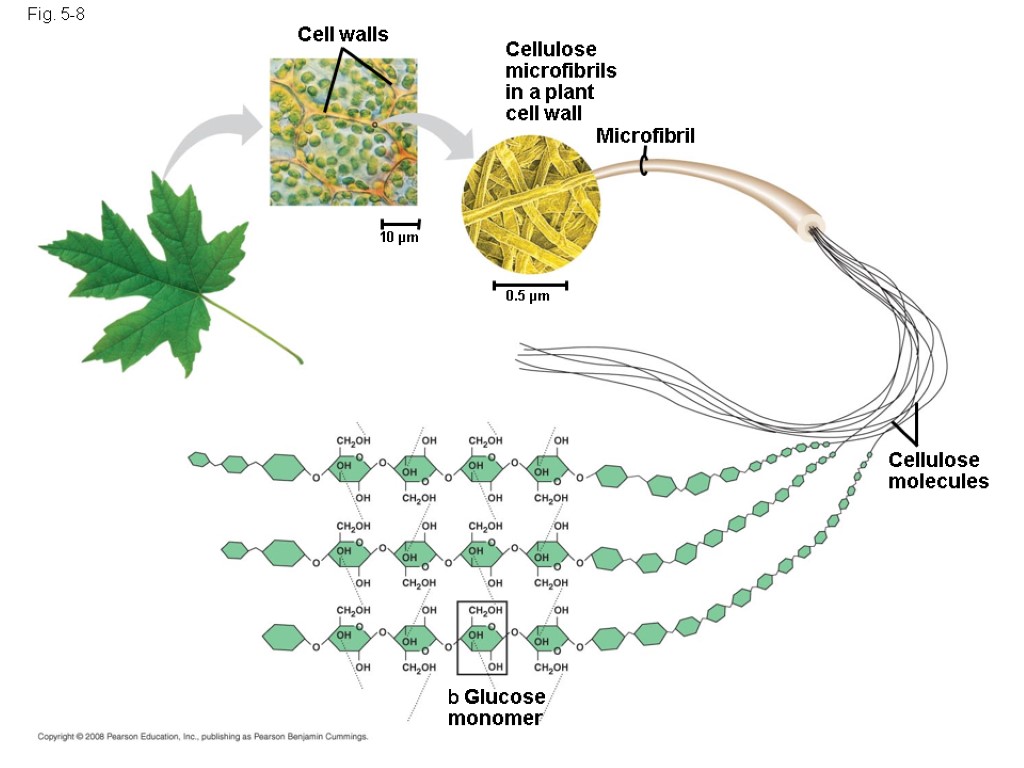
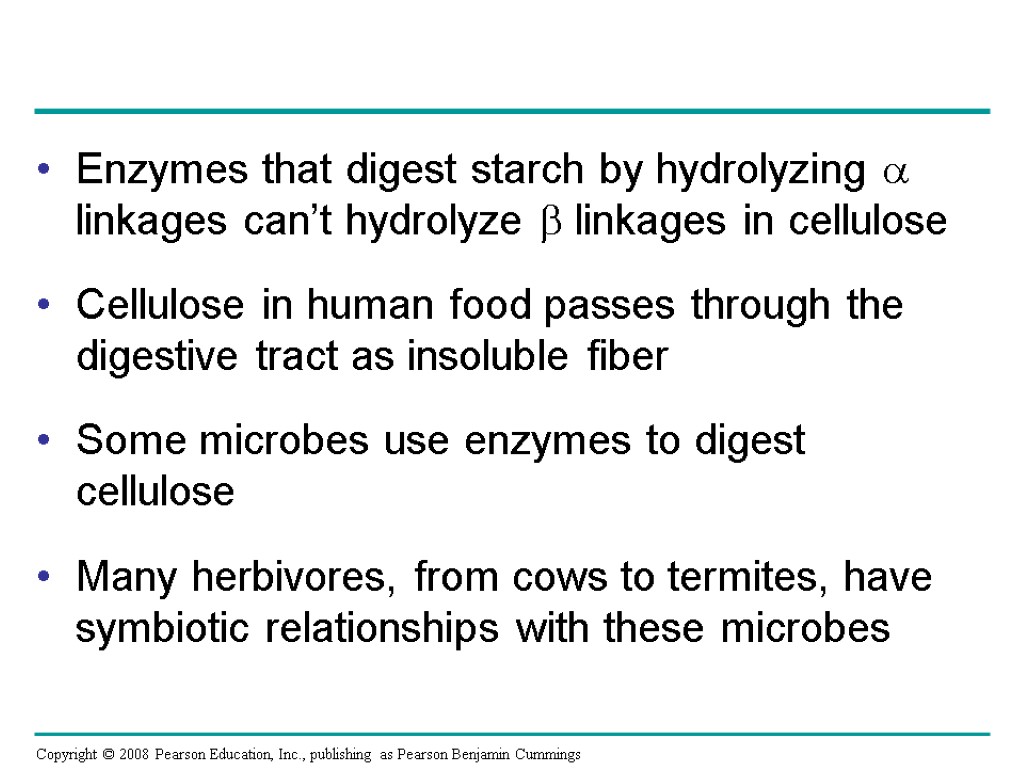

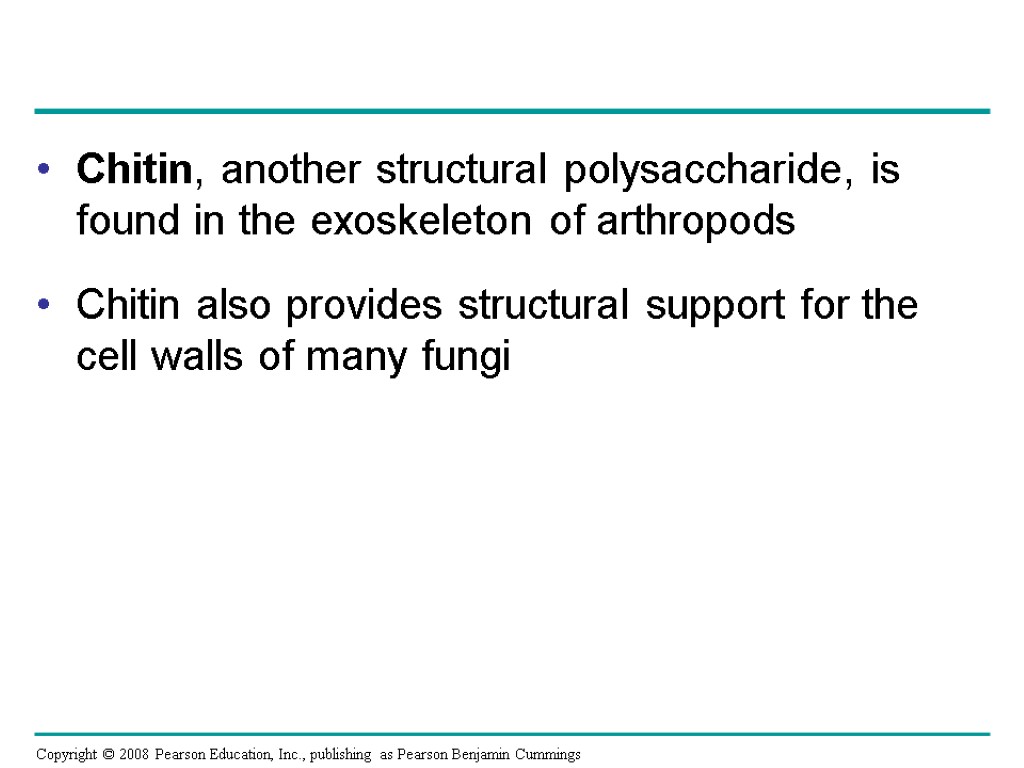



























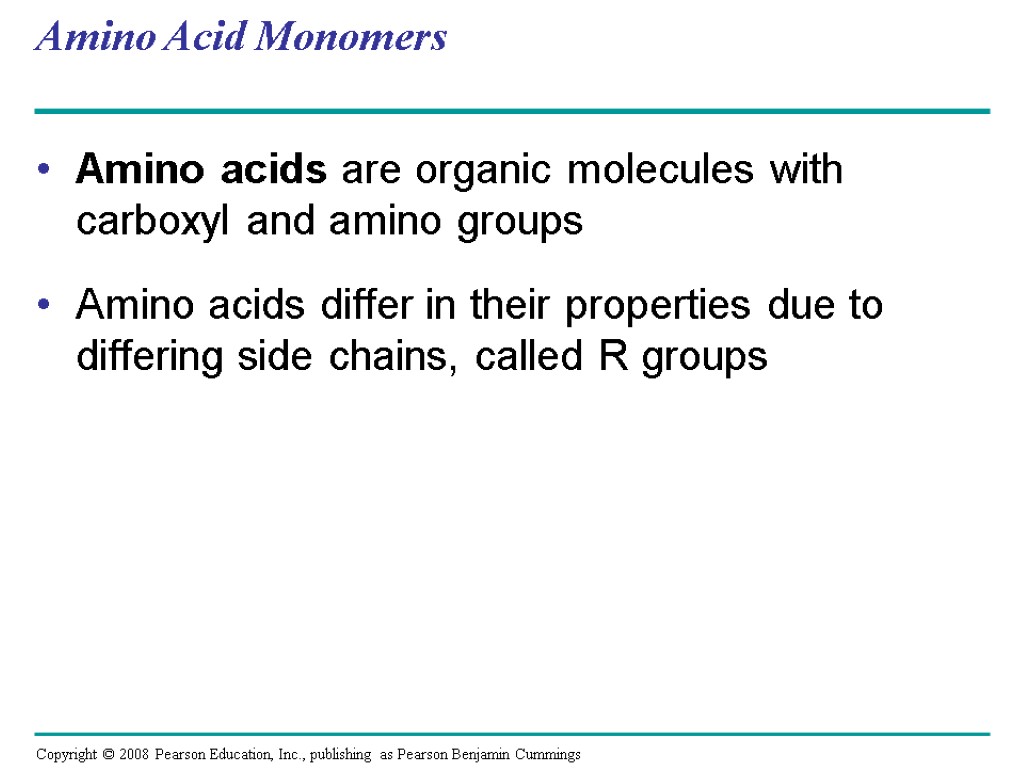




















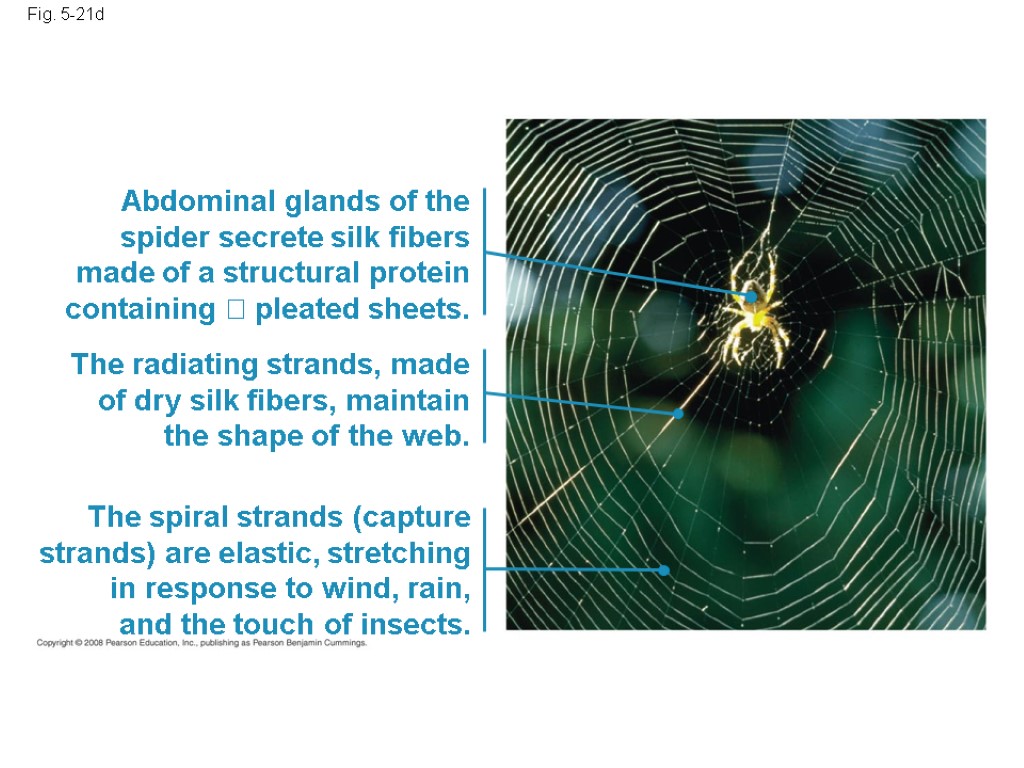


















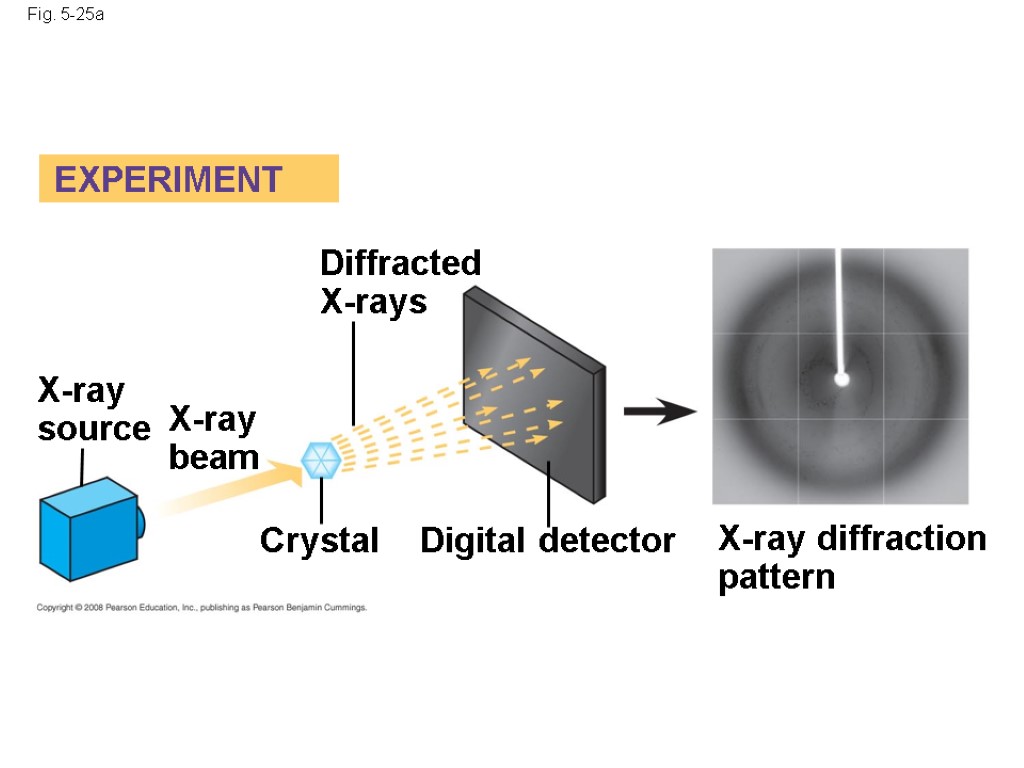




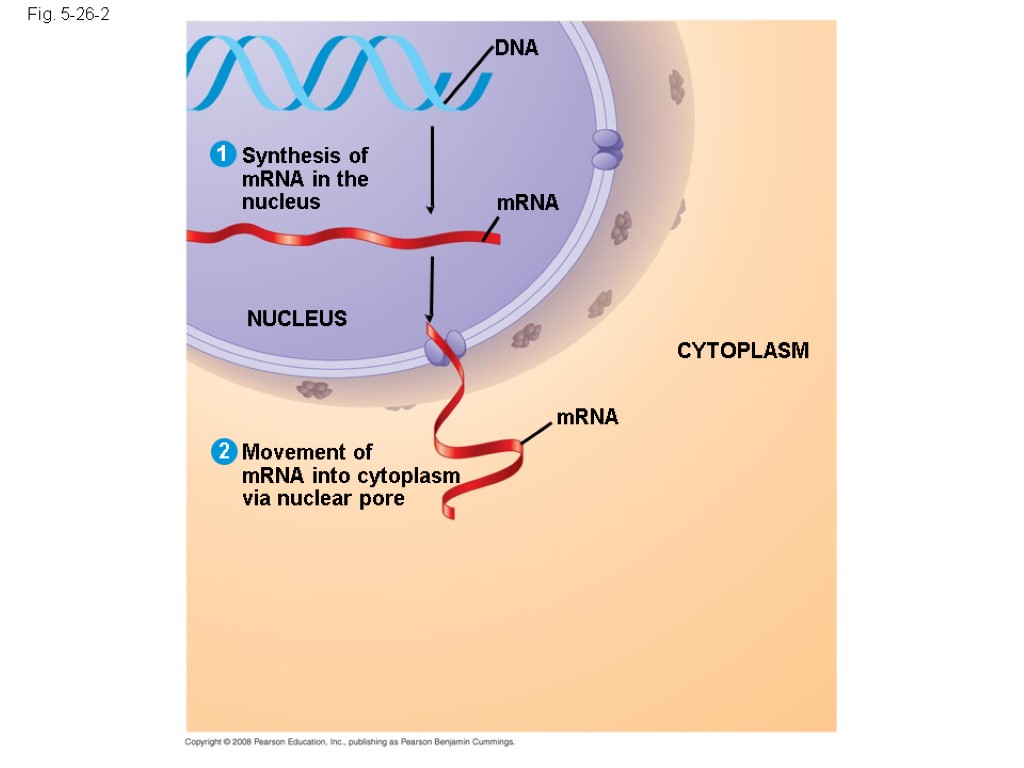





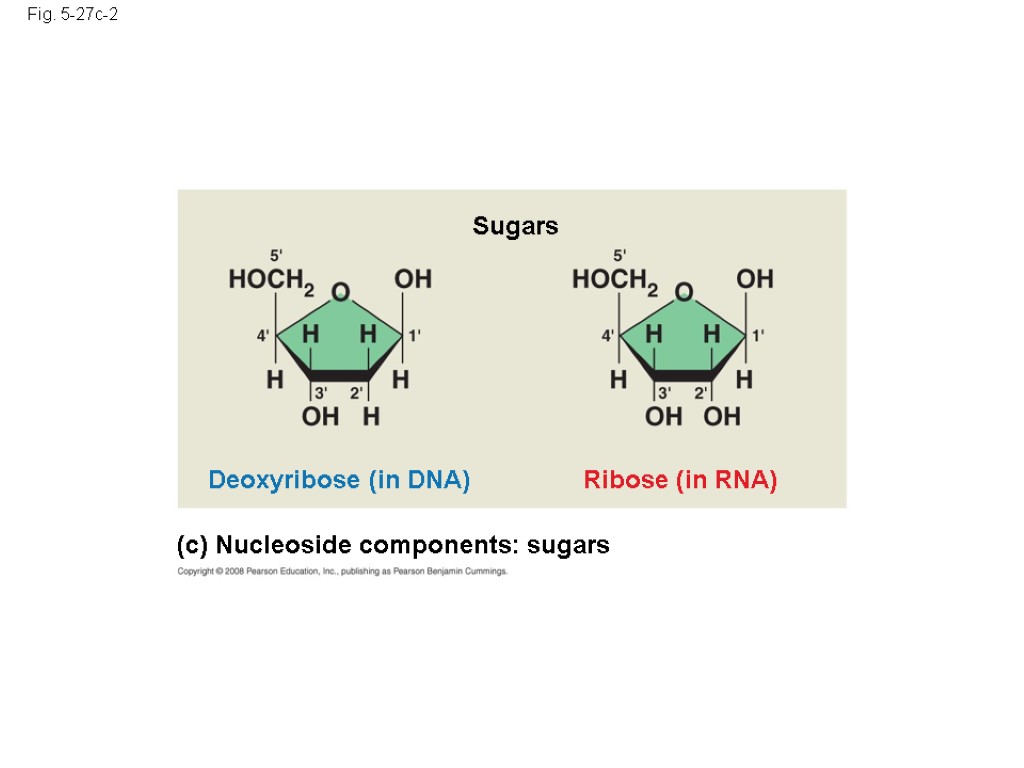



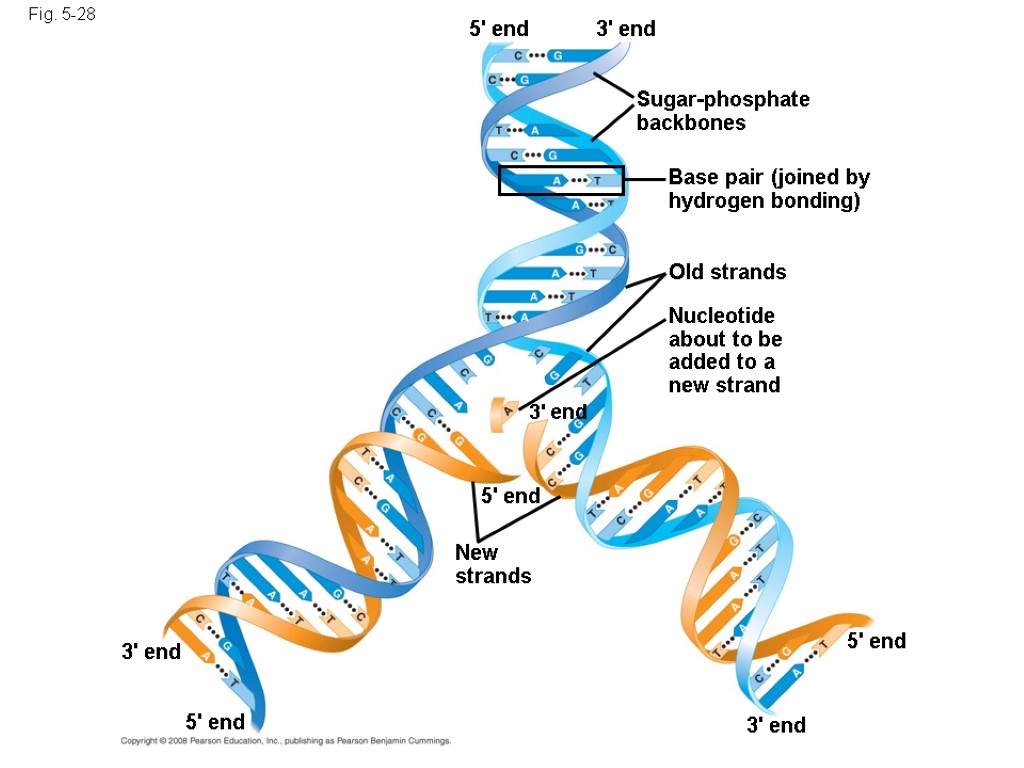









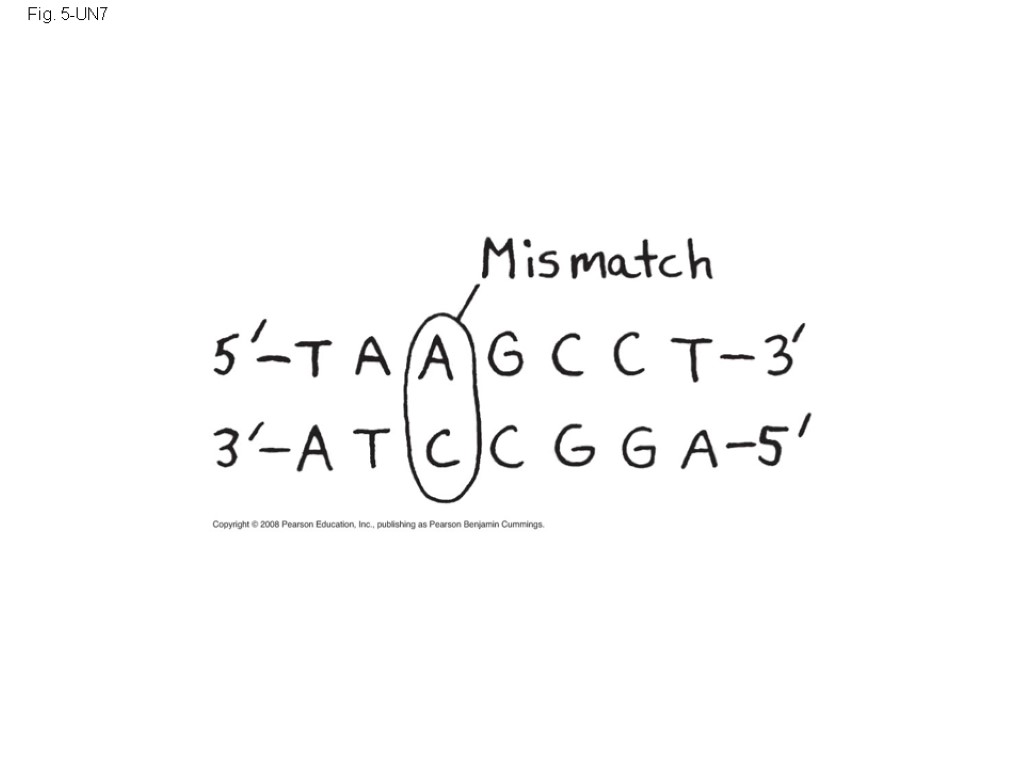





05_lecture_presentation.ppt
- Количество слайдов: 131
 Chapter 5 The Structure and Function of Large Biological Molecules
Chapter 5 The Structure and Function of Large Biological Molecules
 Overview: The Molecules of Life All living things are made up of four classes of large biological molecules: carbohydrates, lipids, proteins, and nucleic acids Within cells, small organic molecules are joined together to form larger molecules Macromolecules are large molecules composed of thousands of covalently connected atoms Molecular structure and function are inseparable Copyright © 2008 Pearson Education, Inc., publishing as Pearson Benjamin Cummings
Overview: The Molecules of Life All living things are made up of four classes of large biological molecules: carbohydrates, lipids, proteins, and nucleic acids Within cells, small organic molecules are joined together to form larger molecules Macromolecules are large molecules composed of thousands of covalently connected atoms Molecular structure and function are inseparable Copyright © 2008 Pearson Education, Inc., publishing as Pearson Benjamin Cummings
 Fig. 5-1
Fig. 5-1
 Concept 5.1: Macromolecules are polymers, built from monomers A polymer is a long molecule consisting of many similar building blocks These small building-block molecules are called monomers Three of the four classes of life’s organic molecules are polymers: Carbohydrates Proteins Nucleic acids Copyright © 2008 Pearson Education, Inc., publishing as Pearson Benjamin Cummings
Concept 5.1: Macromolecules are polymers, built from monomers A polymer is a long molecule consisting of many similar building blocks These small building-block molecules are called monomers Three of the four classes of life’s organic molecules are polymers: Carbohydrates Proteins Nucleic acids Copyright © 2008 Pearson Education, Inc., publishing as Pearson Benjamin Cummings
 A condensation reaction or more specifically a dehydration reaction occurs when two monomers bond together through the loss of a water molecule Enzymes are macromolecules that speed up the dehydration process Polymers are disassembled to monomers by hydrolysis, a reaction that is essentially the reverse of the dehydration reaction The Synthesis and Breakdown of Polymers Animation: Polymers Copyright © 2008 Pearson Education, Inc., publishing as Pearson Benjamin Cummings
A condensation reaction or more specifically a dehydration reaction occurs when two monomers bond together through the loss of a water molecule Enzymes are macromolecules that speed up the dehydration process Polymers are disassembled to monomers by hydrolysis, a reaction that is essentially the reverse of the dehydration reaction The Synthesis and Breakdown of Polymers Animation: Polymers Copyright © 2008 Pearson Education, Inc., publishing as Pearson Benjamin Cummings
 Fig. 5-2 Short polymer HO 1 2 3 H HO H Unlinked monomer Dehydration removes a water molecule, forming a new bond HO H2O H 1 2 3 4 Longer polymer (a) Dehydration reaction in the synthesis of a polymer HO 1 2 3 4 H H2O Hydrolysis adds a water molecule, breaking a bond HO H H HO 1 2 3 (b) Hydrolysis of a polymer
Fig. 5-2 Short polymer HO 1 2 3 H HO H Unlinked monomer Dehydration removes a water molecule, forming a new bond HO H2O H 1 2 3 4 Longer polymer (a) Dehydration reaction in the synthesis of a polymer HO 1 2 3 4 H H2O Hydrolysis adds a water molecule, breaking a bond HO H H HO 1 2 3 (b) Hydrolysis of a polymer
 Fig. 5-2a Dehydration removes a water molecule, forming a new bond Short polymer Unlinked monomer Longer polymer Dehydration reaction in the synthesis of a polymer HO HO HO H2O H H H 4 3 2 1 1 2 3 (a)
Fig. 5-2a Dehydration removes a water molecule, forming a new bond Short polymer Unlinked monomer Longer polymer Dehydration reaction in the synthesis of a polymer HO HO HO H2O H H H 4 3 2 1 1 2 3 (a)
 Fig. 5-2b Hydrolysis adds a water molecule, breaking a bond Hydrolysis of a polymer HO HO HO H2O H H H 3 2 1 1 2 3 4 (b)
Fig. 5-2b Hydrolysis adds a water molecule, breaking a bond Hydrolysis of a polymer HO HO HO H2O H H H 3 2 1 1 2 3 4 (b)
 The Diversity of Polymers Each cell has thousands of different kinds of macromolecules Macromolecules vary among cells of an organism, vary more within a species, and vary even more between species An immense variety of polymers can be built from a small set of monomers 2 3 HO H Copyright © 2008 Pearson Education, Inc., publishing as Pearson Benjamin Cummings
The Diversity of Polymers Each cell has thousands of different kinds of macromolecules Macromolecules vary among cells of an organism, vary more within a species, and vary even more between species An immense variety of polymers can be built from a small set of monomers 2 3 HO H Copyright © 2008 Pearson Education, Inc., publishing as Pearson Benjamin Cummings
 Concept 5.2: Carbohydrates serve as fuel and building material Carbohydrates include sugars and the polymers of sugars The simplest carbohydrates are monosaccharides, or single sugars Carbohydrate macromolecules are polysaccharides, polymers composed of many sugar building blocks Copyright © 2008 Pearson Education, Inc., publishing as Pearson Benjamin Cummings
Concept 5.2: Carbohydrates serve as fuel and building material Carbohydrates include sugars and the polymers of sugars The simplest carbohydrates are monosaccharides, or single sugars Carbohydrate macromolecules are polysaccharides, polymers composed of many sugar building blocks Copyright © 2008 Pearson Education, Inc., publishing as Pearson Benjamin Cummings
 Sugars Monosaccharides have molecular formulas that are usually multiples of CH2O Glucose (C6H12O6) is the most common monosaccharide Monosaccharides are classified by The location of the carbonyl group (as aldose or ketose) The number of carbons in the carbon skeleton Copyright © 2008 Pearson Education, Inc., publishing as Pearson Benjamin Cummings
Sugars Monosaccharides have molecular formulas that are usually multiples of CH2O Glucose (C6H12O6) is the most common monosaccharide Monosaccharides are classified by The location of the carbonyl group (as aldose or ketose) The number of carbons in the carbon skeleton Copyright © 2008 Pearson Education, Inc., publishing as Pearson Benjamin Cummings
 Fig. 5-3 Dihydroxyacetone Ribulose Ketoses Aldoses Fructose Glyceraldehyde Ribose Glucose Galactose Hexoses (C6H12O6) Pentoses (C5H10O5) Trioses (C3H6O3)
Fig. 5-3 Dihydroxyacetone Ribulose Ketoses Aldoses Fructose Glyceraldehyde Ribose Glucose Galactose Hexoses (C6H12O6) Pentoses (C5H10O5) Trioses (C3H6O3)
 Fig. 5-3a Aldoses Glyceraldehyde Ribose Glucose Galactose Hexoses (C6H12O6) Pentoses (C5H10O5) Trioses (C3H6O3)
Fig. 5-3a Aldoses Glyceraldehyde Ribose Glucose Galactose Hexoses (C6H12O6) Pentoses (C5H10O5) Trioses (C3H6O3)
 Fig. 5-3b Ketoses Dihydroxyacetone Ribulose Fructose Hexoses (C6H12O6) Pentoses (C5H10O5) Trioses (C3H6O3)
Fig. 5-3b Ketoses Dihydroxyacetone Ribulose Fructose Hexoses (C6H12O6) Pentoses (C5H10O5) Trioses (C3H6O3)
 Though often drawn as linear skeletons, in aqueous solutions many sugars form rings Monosaccharides serve as a major fuel for cells and as raw material for building molecules Copyright © 2008 Pearson Education, Inc., publishing as Pearson Benjamin Cummings
Though often drawn as linear skeletons, in aqueous solutions many sugars form rings Monosaccharides serve as a major fuel for cells and as raw material for building molecules Copyright © 2008 Pearson Education, Inc., publishing as Pearson Benjamin Cummings
 Fig. 5-4 (a) Linear and ring forms (b) Abbreviated ring structure
Fig. 5-4 (a) Linear and ring forms (b) Abbreviated ring structure
 Fig. 5-4a (a) Linear and ring forms
Fig. 5-4a (a) Linear and ring forms
 Fig. 5-4b (b) Abbreviated ring structure
Fig. 5-4b (b) Abbreviated ring structure
 A disaccharide is formed when a dehydration reaction joins two monosaccharides This covalent bond is called a glycosidic linkage Animation: Disaccharides Copyright © 2008 Pearson Education, Inc., publishing as Pearson Benjamin Cummings
A disaccharide is formed when a dehydration reaction joins two monosaccharides This covalent bond is called a glycosidic linkage Animation: Disaccharides Copyright © 2008 Pearson Education, Inc., publishing as Pearson Benjamin Cummings
 Fig. 5-5 (b) Dehydration reaction in the synthesis of sucrose Glucose Fructose Sucrose Maltose Glucose Glucose (a) Dehydration reaction in the synthesis of maltose 1–4 glycosidic linkage 1–2 glycosidic linkage
Fig. 5-5 (b) Dehydration reaction in the synthesis of sucrose Glucose Fructose Sucrose Maltose Glucose Glucose (a) Dehydration reaction in the synthesis of maltose 1–4 glycosidic linkage 1–2 glycosidic linkage
 Polysaccharides Polysaccharides, the polymers of sugars, have storage and structural roles The structure and function of a polysaccharide are determined by its sugar monomers and the positions of glycosidic linkages Copyright © 2008 Pearson Education, Inc., publishing as Pearson Benjamin Cummings
Polysaccharides Polysaccharides, the polymers of sugars, have storage and structural roles The structure and function of a polysaccharide are determined by its sugar monomers and the positions of glycosidic linkages Copyright © 2008 Pearson Education, Inc., publishing as Pearson Benjamin Cummings
 Storage Polysaccharides Starch, a storage polysaccharide of plants, consists entirely of glucose monomers Plants store surplus starch as granules within chloroplasts and other plastids Copyright © 2008 Pearson Education, Inc., publishing as Pearson Benjamin Cummings
Storage Polysaccharides Starch, a storage polysaccharide of plants, consists entirely of glucose monomers Plants store surplus starch as granules within chloroplasts and other plastids Copyright © 2008 Pearson Education, Inc., publishing as Pearson Benjamin Cummings
 Fig. 5-6 (b) Glycogen: an animal polysaccharide Starch Glycogen Amylose Chloroplast (a) Starch: a plant polysaccharide Amylopectin Mitochondria Glycogen granules 0.5 µm 1 µm
Fig. 5-6 (b) Glycogen: an animal polysaccharide Starch Glycogen Amylose Chloroplast (a) Starch: a plant polysaccharide Amylopectin Mitochondria Glycogen granules 0.5 µm 1 µm
 Glycogen is a storage polysaccharide in animals Humans and other vertebrates store glycogen mainly in liver and muscle cells Copyright © 2008 Pearson Education, Inc., publishing as Pearson Benjamin Cummings
Glycogen is a storage polysaccharide in animals Humans and other vertebrates store glycogen mainly in liver and muscle cells Copyright © 2008 Pearson Education, Inc., publishing as Pearson Benjamin Cummings
 Structural Polysaccharides The polysaccharide cellulose is a major component of the tough wall of plant cells Like starch, cellulose is a polymer of glucose, but the glycosidic linkages differ The difference is based on two ring forms for glucose: alpha () and beta () Animation: Polysaccharides Copyright © 2008 Pearson Education, Inc., publishing as Pearson Benjamin Cummings
Structural Polysaccharides The polysaccharide cellulose is a major component of the tough wall of plant cells Like starch, cellulose is a polymer of glucose, but the glycosidic linkages differ The difference is based on two ring forms for glucose: alpha () and beta () Animation: Polysaccharides Copyright © 2008 Pearson Education, Inc., publishing as Pearson Benjamin Cummings
 Fig. 5-7 (a) and glucose ring structures Glucose Glucose (b) Starch: 1–4 linkage of glucose monomers (b) Cellulose: 1–4 linkage of glucose monomers
Fig. 5-7 (a) and glucose ring structures Glucose Glucose (b) Starch: 1–4 linkage of glucose monomers (b) Cellulose: 1–4 linkage of glucose monomers
 Fig. 5-7a (a) and glucose ring structures Glucose Glucose
Fig. 5-7a (a) and glucose ring structures Glucose Glucose
 Fig. 5-7bc (b) Starch: 1–4 linkage of glucose monomers (c) Cellulose: 1–4 linkage of glucose monomers
Fig. 5-7bc (b) Starch: 1–4 linkage of glucose monomers (c) Cellulose: 1–4 linkage of glucose monomers
 Polymers with glucose are helical Polymers with glucose are straight In straight structures, H atoms on one strand can bond with OH groups on other strands Parallel cellulose molecules held together this way are grouped into microfibrils, which form strong building materials for plants Copyright © 2008 Pearson Education, Inc., publishing as Pearson Benjamin Cummings
Polymers with glucose are helical Polymers with glucose are straight In straight structures, H atoms on one strand can bond with OH groups on other strands Parallel cellulose molecules held together this way are grouped into microfibrils, which form strong building materials for plants Copyright © 2008 Pearson Education, Inc., publishing as Pearson Benjamin Cummings
 Fig. 5-8 Glucose monomer Cellulose molecules Microfibril Cellulose microfibrils in a plant cell wall 0.5 µm 10 µm Cell walls
Fig. 5-8 Glucose monomer Cellulose molecules Microfibril Cellulose microfibrils in a plant cell wall 0.5 µm 10 µm Cell walls
 Enzymes that digest starch by hydrolyzing linkages can’t hydrolyze linkages in cellulose Cellulose in human food passes through the digestive tract as insoluble fiber Some microbes use enzymes to digest cellulose Many herbivores, from cows to termites, have symbiotic relationships with these microbes Copyright © 2008 Pearson Education, Inc., publishing as Pearson Benjamin Cummings
Enzymes that digest starch by hydrolyzing linkages can’t hydrolyze linkages in cellulose Cellulose in human food passes through the digestive tract as insoluble fiber Some microbes use enzymes to digest cellulose Many herbivores, from cows to termites, have symbiotic relationships with these microbes Copyright © 2008 Pearson Education, Inc., publishing as Pearson Benjamin Cummings
 Fig. 5-9
Fig. 5-9
 Chitin, another structural polysaccharide, is found in the exoskeleton of arthropods Chitin also provides structural support for the cell walls of many fungi Copyright © 2008 Pearson Education, Inc., publishing as Pearson Benjamin Cummings
Chitin, another structural polysaccharide, is found in the exoskeleton of arthropods Chitin also provides structural support for the cell walls of many fungi Copyright © 2008 Pearson Education, Inc., publishing as Pearson Benjamin Cummings
 Fig. 5-10 The structure of the chitin monomer. (a) (b) (c) Chitin forms the exoskeleton of arthropods. Chitin is used to make a strong and flexible surgical thread.
Fig. 5-10 The structure of the chitin monomer. (a) (b) (c) Chitin forms the exoskeleton of arthropods. Chitin is used to make a strong and flexible surgical thread.
 Concept 5.3: Lipids are a diverse group of hydrophobic molecules Lipids are the one class of large biological molecules that do not form polymers The unifying feature of lipids is having little or no affinity for water Lipids are hydrophobic becausethey consist mostly of hydrocarbons, which form nonpolar covalent bonds The most biologically important lipids are fats, phospholipids, and steroids Copyright © 2008 Pearson Education, Inc., publishing as Pearson Benjamin Cummings
Concept 5.3: Lipids are a diverse group of hydrophobic molecules Lipids are the one class of large biological molecules that do not form polymers The unifying feature of lipids is having little or no affinity for water Lipids are hydrophobic becausethey consist mostly of hydrocarbons, which form nonpolar covalent bonds The most biologically important lipids are fats, phospholipids, and steroids Copyright © 2008 Pearson Education, Inc., publishing as Pearson Benjamin Cummings
 Fats Fats are constructed from two types of smaller molecules: glycerol and fatty acids Glycerol is a three-carbon alcohol with a hydroxyl group attached to each carbon A fatty acid consists of a carboxyl group attached to a long carbon skeleton Copyright © 2008 Pearson Education, Inc., publishing as Pearson Benjamin Cummings
Fats Fats are constructed from two types of smaller molecules: glycerol and fatty acids Glycerol is a three-carbon alcohol with a hydroxyl group attached to each carbon A fatty acid consists of a carboxyl group attached to a long carbon skeleton Copyright © 2008 Pearson Education, Inc., publishing as Pearson Benjamin Cummings
 Fig. 5-11 Fatty acid (palmitic acid) Glycerol (a) Dehydration reaction in the synthesis of a fat Ester linkage (b) Fat molecule (triacylglycerol)
Fig. 5-11 Fatty acid (palmitic acid) Glycerol (a) Dehydration reaction in the synthesis of a fat Ester linkage (b) Fat molecule (triacylglycerol)
 Fig. 5-11a Fatty acid (palmitic acid) (a) Dehydration reaction in the synthesis of a fat Glycerol
Fig. 5-11a Fatty acid (palmitic acid) (a) Dehydration reaction in the synthesis of a fat Glycerol
 Fig. 5-11b (b) Fat molecule (triacylglycerol) Ester linkage
Fig. 5-11b (b) Fat molecule (triacylglycerol) Ester linkage
 Fats separate from water because water molecules form hydrogen bonds with each other and exclude the fats In a fat, three fatty acids are joined to glycerol by an ester linkage, creating a triacylglycerol, or triglyceride Copyright © 2008 Pearson Education, Inc., publishing as Pearson Benjamin Cummings
Fats separate from water because water molecules form hydrogen bonds with each other and exclude the fats In a fat, three fatty acids are joined to glycerol by an ester linkage, creating a triacylglycerol, or triglyceride Copyright © 2008 Pearson Education, Inc., publishing as Pearson Benjamin Cummings
 Fatty acids vary in length (number of carbons) and in the number and locations of double bonds Saturated fatty acids have the maximum number of hydrogen atoms possible and no double bonds Unsaturated fatty acids have one or more double bonds Animation: Fats Copyright © 2008 Pearson Education, Inc., publishing as Pearson Benjamin Cummings
Fatty acids vary in length (number of carbons) and in the number and locations of double bonds Saturated fatty acids have the maximum number of hydrogen atoms possible and no double bonds Unsaturated fatty acids have one or more double bonds Animation: Fats Copyright © 2008 Pearson Education, Inc., publishing as Pearson Benjamin Cummings
 Fig. 5-12 Structural formula of a saturated fat molecule Stearic acid, a saturated fatty acid (a) Saturated fat Structural formula of an unsaturated fat molecule Oleic acid, an unsaturated fatty acid (b) Unsaturated fat cis double bond causes bending
Fig. 5-12 Structural formula of a saturated fat molecule Stearic acid, a saturated fatty acid (a) Saturated fat Structural formula of an unsaturated fat molecule Oleic acid, an unsaturated fatty acid (b) Unsaturated fat cis double bond causes bending
 Fig. 5-12a (a) Saturated fat Structural formula of a saturated fat molecule Stearic acid, a saturated fatty acid
Fig. 5-12a (a) Saturated fat Structural formula of a saturated fat molecule Stearic acid, a saturated fatty acid
 Fig. 5-12b (b) Unsaturated fat Structural formula of an unsaturated fat molecule Oleic acid, an unsaturated fatty acid cis double bond causes bending
Fig. 5-12b (b) Unsaturated fat Structural formula of an unsaturated fat molecule Oleic acid, an unsaturated fatty acid cis double bond causes bending
 Fats made from saturated fatty acids are called saturated fats, and are solid at room temperature Most animal fats are saturated Fats made from unsaturated fatty acids are called unsaturated fats or oils, and are liquid at room temperature Plant fats and fish fats are usually unsaturated Copyright © 2008 Pearson Education, Inc., publishing as Pearson Benjamin Cummings
Fats made from saturated fatty acids are called saturated fats, and are solid at room temperature Most animal fats are saturated Fats made from unsaturated fatty acids are called unsaturated fats or oils, and are liquid at room temperature Plant fats and fish fats are usually unsaturated Copyright © 2008 Pearson Education, Inc., publishing as Pearson Benjamin Cummings
 A diet rich in saturated fats may contribute to cardiovascular disease through plaque deposits Hydrogenation is the process of converting unsaturated fats to saturated fats by adding hydrogen Hydrogenating vegetable oils also creates unsaturated fats with trans double bonds These trans fats may contribute more than saturated fats to cardiovascular disease Copyright © 2008 Pearson Education, Inc., publishing as Pearson Benjamin Cummings
A diet rich in saturated fats may contribute to cardiovascular disease through plaque deposits Hydrogenation is the process of converting unsaturated fats to saturated fats by adding hydrogen Hydrogenating vegetable oils also creates unsaturated fats with trans double bonds These trans fats may contribute more than saturated fats to cardiovascular disease Copyright © 2008 Pearson Education, Inc., publishing as Pearson Benjamin Cummings
 The major function of fats is energy storage Humans and other mammals store their fat in adipose cells Adipose tissue also cushions vital organs and insulates the body Copyright © 2008 Pearson Education, Inc., publishing as Pearson Benjamin Cummings
The major function of fats is energy storage Humans and other mammals store their fat in adipose cells Adipose tissue also cushions vital organs and insulates the body Copyright © 2008 Pearson Education, Inc., publishing as Pearson Benjamin Cummings
 Phospholipids In a phospholipid, two fatty acids and a phosphate group are attached to glycerol The two fatty acid tails are hydrophobic, but the phosphate group and its attachments form a hydrophilic head Copyright © 2008 Pearson Education, Inc., publishing as Pearson Benjamin Cummings
Phospholipids In a phospholipid, two fatty acids and a phosphate group are attached to glycerol The two fatty acid tails are hydrophobic, but the phosphate group and its attachments form a hydrophilic head Copyright © 2008 Pearson Education, Inc., publishing as Pearson Benjamin Cummings
 Fig. 5-13 (b) Space-filling model (a) (c) Structural formula Phospholipid symbol Fatty acids Hydrophilic head Hydrophobic tails Choline Phosphate Glycerol Hydrophobic tails Hydrophilic head
Fig. 5-13 (b) Space-filling model (a) (c) Structural formula Phospholipid symbol Fatty acids Hydrophilic head Hydrophobic tails Choline Phosphate Glycerol Hydrophobic tails Hydrophilic head
 Fig. 5-13ab (b) Space-filling model (a) Structural formula Fatty acids Choline Phosphate Glycerol Hydrophobic tails Hydrophilic head
Fig. 5-13ab (b) Space-filling model (a) Structural formula Fatty acids Choline Phosphate Glycerol Hydrophobic tails Hydrophilic head
 When phospholipids are added to water, they self-assemble into a bilayer, with the hydrophobic tails pointing toward the interior The structure of phospholipids results in a bilayer arrangement found in cell membranes Phospholipids are the major component of all cell membranes Copyright © 2008 Pearson Education, Inc., publishing as Pearson Benjamin Cummings
When phospholipids are added to water, they self-assemble into a bilayer, with the hydrophobic tails pointing toward the interior The structure of phospholipids results in a bilayer arrangement found in cell membranes Phospholipids are the major component of all cell membranes Copyright © 2008 Pearson Education, Inc., publishing as Pearson Benjamin Cummings
 Fig. 5-14 Hydrophilic head Hydrophobic tail WATER WATER
Fig. 5-14 Hydrophilic head Hydrophobic tail WATER WATER
 Steroids Steroids are lipids characterized by a carbon skeleton consisting of four fused rings Cholesterol, an important steroid, is a component in animal cell membranes Although cholesterol is essential in animals, high levels in the blood may contribute to cardiovascular disease Copyright © 2008 Pearson Education, Inc., publishing as Pearson Benjamin Cummings
Steroids Steroids are lipids characterized by a carbon skeleton consisting of four fused rings Cholesterol, an important steroid, is a component in animal cell membranes Although cholesterol is essential in animals, high levels in the blood may contribute to cardiovascular disease Copyright © 2008 Pearson Education, Inc., publishing as Pearson Benjamin Cummings
 Fig. 5-15
Fig. 5-15
 Concept 5.4: Proteins have many structures, resulting in a wide range of functions Proteins account for more than 50% of the dry mass of most cells Protein functions include structural support, storage, transport, cellular communications, movement, and defense against foreign substances Copyright © 2008 Pearson Education, Inc., publishing as Pearson Benjamin Cummings
Concept 5.4: Proteins have many structures, resulting in a wide range of functions Proteins account for more than 50% of the dry mass of most cells Protein functions include structural support, storage, transport, cellular communications, movement, and defense against foreign substances Copyright © 2008 Pearson Education, Inc., publishing as Pearson Benjamin Cummings
 Table 5-1
Table 5-1
 Animation: Structural Proteins Animation: Storage Proteins Animation: Transport Proteins Animation: Receptor Proteins Animation: Contractile Proteins Animation: Defensive Proteins Animation: Hormonal Proteins Animation: Sensory Proteins Animation: Gene Regulatory Proteins Copyright © 2008 Pearson Education, Inc., publishing as Pearson Benjamin Cummings
Animation: Structural Proteins Animation: Storage Proteins Animation: Transport Proteins Animation: Receptor Proteins Animation: Contractile Proteins Animation: Defensive Proteins Animation: Hormonal Proteins Animation: Sensory Proteins Animation: Gene Regulatory Proteins Copyright © 2008 Pearson Education, Inc., publishing as Pearson Benjamin Cummings
 Enzymes are a type of protein that acts as a catalyst to speed up chemical reactions Enzymes can perform their functions repeatedly, functioning as workhorses that carry out the processes of life Animation: Enzymes Copyright © 2008 Pearson Education, Inc., publishing as Pearson Benjamin Cummings
Enzymes are a type of protein that acts as a catalyst to speed up chemical reactions Enzymes can perform their functions repeatedly, functioning as workhorses that carry out the processes of life Animation: Enzymes Copyright © 2008 Pearson Education, Inc., publishing as Pearson Benjamin Cummings
 Fig. 5-16 Enzyme (sucrase) Substrate (sucrose) Fructose Glucose OH H O H2O
Fig. 5-16 Enzyme (sucrase) Substrate (sucrose) Fructose Glucose OH H O H2O
 Polypeptides Polypeptides are polymers built from the same set of 20 amino acids A protein consists of one or more polypeptides Copyright © 2008 Pearson Education, Inc., publishing as Pearson Benjamin Cummings
Polypeptides Polypeptides are polymers built from the same set of 20 amino acids A protein consists of one or more polypeptides Copyright © 2008 Pearson Education, Inc., publishing as Pearson Benjamin Cummings
 Amino Acid Monomers Amino acids are organic molecules with carboxyl and amino groups Amino acids differ in their properties due to differing side chains, called R groups Copyright © 2008 Pearson Education, Inc., publishing as Pearson Benjamin Cummings
Amino Acid Monomers Amino acids are organic molecules with carboxyl and amino groups Amino acids differ in their properties due to differing side chains, called R groups Copyright © 2008 Pearson Education, Inc., publishing as Pearson Benjamin Cummings
 Fig. 5-UN1 Amino group Carboxyl group carbon
Fig. 5-UN1 Amino group Carboxyl group carbon
 Fig. 5-17 Nonpolar Glycine (Gly or G) Alanine (Ala or A) Valine (Val or V) Leucine (Leu or L) Isoleucine (Ile or I) Methionine (Met or M) Phenylalanine (Phe or F) Trypotphan (Trp or W) Proline (Pro or P) Polar Serine (Ser or S) Threonine (Thr or T) Cysteine (Cys or C) Tyrosine (Tyr or Y) Asparagine (Asn or N) Glutamine (Gln or Q) Electrically charged Acidic Basic Aspartic acid (Asp or D) Glutamic acid (Glu or E) Lysine (Lys or K) Arginine (Arg or R) Histidine (His or H)
Fig. 5-17 Nonpolar Glycine (Gly or G) Alanine (Ala or A) Valine (Val or V) Leucine (Leu or L) Isoleucine (Ile or I) Methionine (Met or M) Phenylalanine (Phe or F) Trypotphan (Trp or W) Proline (Pro or P) Polar Serine (Ser or S) Threonine (Thr or T) Cysteine (Cys or C) Tyrosine (Tyr or Y) Asparagine (Asn or N) Glutamine (Gln or Q) Electrically charged Acidic Basic Aspartic acid (Asp or D) Glutamic acid (Glu or E) Lysine (Lys or K) Arginine (Arg or R) Histidine (His or H)
 Fig. 5-17a Nonpolar Glycine (Gly or G) Alanine (Ala or A) Valine (Val or V) Leucine (Leu or L) Isoleucine (Ile or I) Methionine (Met or M) Phenylalanine (Phe or F) Tryptophan (Trp or W) Proline (Pro or P)
Fig. 5-17a Nonpolar Glycine (Gly or G) Alanine (Ala or A) Valine (Val or V) Leucine (Leu or L) Isoleucine (Ile or I) Methionine (Met or M) Phenylalanine (Phe or F) Tryptophan (Trp or W) Proline (Pro or P)
 Fig. 5-17b Polar Asparagine (Asn or N) Glutamine (Gln or Q) Serine (Ser or S) Threonine (Thr or T) Cysteine (Cys or C) Tyrosine (Tyr or Y)
Fig. 5-17b Polar Asparagine (Asn or N) Glutamine (Gln or Q) Serine (Ser or S) Threonine (Thr or T) Cysteine (Cys or C) Tyrosine (Tyr or Y)
 Fig. 5-17c Acidic Arginine (Arg or R) Histidine (His or H) Aspartic acid (Asp or D) Glutamic acid (Glu or E) Lysine (Lys or K) Basic Electrically charged
Fig. 5-17c Acidic Arginine (Arg or R) Histidine (His or H) Aspartic acid (Asp or D) Glutamic acid (Glu or E) Lysine (Lys or K) Basic Electrically charged
 Amino Acid Polymers Amino acids are linked by peptide bonds A polypeptide is a polymer of amino acids Polypeptides range in length from a few to more than a thousand monomers Each polypeptide has a unique linear sequence of amino acids Copyright © 2008 Pearson Education, Inc., publishing as Pearson Benjamin Cummings
Amino Acid Polymers Amino acids are linked by peptide bonds A polypeptide is a polymer of amino acids Polypeptides range in length from a few to more than a thousand monomers Each polypeptide has a unique linear sequence of amino acids Copyright © 2008 Pearson Education, Inc., publishing as Pearson Benjamin Cummings
 Peptide bond Fig. 5-18 Amino end (N-terminus) Peptide bond Side chains Backbone Carboxyl end (C-terminus) (a) (b)
Peptide bond Fig. 5-18 Amino end (N-terminus) Peptide bond Side chains Backbone Carboxyl end (C-terminus) (a) (b)
 Protein Structure and Function A functional protein consists of one or more polypeptides twisted, folded, and coiled into a unique shape Copyright © 2008 Pearson Education, Inc., publishing as Pearson Benjamin Cummings
Protein Structure and Function A functional protein consists of one or more polypeptides twisted, folded, and coiled into a unique shape Copyright © 2008 Pearson Education, Inc., publishing as Pearson Benjamin Cummings
 Fig. 5-19 A ribbon model of lysozyme (a) (b) A space-filling model of lysozyme Groove Groove
Fig. 5-19 A ribbon model of lysozyme (a) (b) A space-filling model of lysozyme Groove Groove
 Fig. 5-19a A ribbon model of lysozyme (a) Groove
Fig. 5-19a A ribbon model of lysozyme (a) Groove
 Fig. 5-19b (b) A space-filling model of lysozyme Groove
Fig. 5-19b (b) A space-filling model of lysozyme Groove
 The sequence of amino acids determines a protein’s three-dimensional structure A protein’s structure determines its function Copyright © 2008 Pearson Education, Inc., publishing as Pearson Benjamin Cummings
The sequence of amino acids determines a protein’s three-dimensional structure A protein’s structure determines its function Copyright © 2008 Pearson Education, Inc., publishing as Pearson Benjamin Cummings
 Fig. 5-20 Antibody protein Protein from flu virus
Fig. 5-20 Antibody protein Protein from flu virus
 Four Levels of Protein Structure The primary structure of a protein is its unique sequence of amino acids Secondary structure, found in most proteins, consists of coils and folds in the polypeptide chain Tertiary structure is determined by interactions among various side chains (R groups) Quaternary structure results when a protein consists of multiple polypeptide chains Animation: Protein Structure Introduction Copyright © 2008 Pearson Education, Inc., publishing as Pearson Benjamin Cummings
Four Levels of Protein Structure The primary structure of a protein is its unique sequence of amino acids Secondary structure, found in most proteins, consists of coils and folds in the polypeptide chain Tertiary structure is determined by interactions among various side chains (R groups) Quaternary structure results when a protein consists of multiple polypeptide chains Animation: Protein Structure Introduction Copyright © 2008 Pearson Education, Inc., publishing as Pearson Benjamin Cummings
 Primary structure, the sequence of amino acids in a protein, is like the order of letters in a long word Primary structure is determined by inherited genetic information Animation: Primary Protein Structure Copyright © 2008 Pearson Education, Inc., publishing as Pearson Benjamin Cummings
Primary structure, the sequence of amino acids in a protein, is like the order of letters in a long word Primary structure is determined by inherited genetic information Animation: Primary Protein Structure Copyright © 2008 Pearson Education, Inc., publishing as Pearson Benjamin Cummings
 Fig. 5-21 Primary Structure Secondary Structure Tertiary Structure pleated sheet Examples of amino acid subunits +H3N Amino end helix Quaternary Structure
Fig. 5-21 Primary Structure Secondary Structure Tertiary Structure pleated sheet Examples of amino acid subunits +H3N Amino end helix Quaternary Structure
 Fig. 5-21a Amino acid subunits +H3N Amino end 25 20 15 10 5 1 Primary Structure
Fig. 5-21a Amino acid subunits +H3N Amino end 25 20 15 10 5 1 Primary Structure
 Fig. 5-21b Amino acid subunits +H3N Amino end Carboxyl end 125 120 115 110 105 100 95 90 85 80 75 20 25 15 10 5 1
Fig. 5-21b Amino acid subunits +H3N Amino end Carboxyl end 125 120 115 110 105 100 95 90 85 80 75 20 25 15 10 5 1
 The coils and folds of secondary structure result from hydrogen bonds between repeating constituents of the polypeptide backbone Typical secondary structures are a coil called an helix and a folded structure called a pleated sheet Animation: Secondary Protein Structure Copyright © 2008 Pearson Education, Inc., publishing as Pearson Benjamin Cummings
The coils and folds of secondary structure result from hydrogen bonds between repeating constituents of the polypeptide backbone Typical secondary structures are a coil called an helix and a folded structure called a pleated sheet Animation: Secondary Protein Structure Copyright © 2008 Pearson Education, Inc., publishing as Pearson Benjamin Cummings
 Fig. 5-21c Secondary Structure pleated sheet Examples of amino acid subunits helix
Fig. 5-21c Secondary Structure pleated sheet Examples of amino acid subunits helix
 Fig. 5-21d Abdominal glands of the spider secrete silk fibers made of a structural protein containing pleated sheets. The radiating strands, made of dry silk fibers, maintain the shape of the web. The spiral strands (capture strands) are elastic, stretching in response to wind, rain, and the touch of insects.
Fig. 5-21d Abdominal glands of the spider secrete silk fibers made of a structural protein containing pleated sheets. The radiating strands, made of dry silk fibers, maintain the shape of the web. The spiral strands (capture strands) are elastic, stretching in response to wind, rain, and the touch of insects.
 Tertiary structure is determined by interactions between R groups, rather than interactions between backbone constituents These interactions between R groups include hydrogen bonds, ionic bonds, hydrophobic interactions, and van der Waals interactions Strong covalent bonds called disulfide bridges may reinforce the protein’s structure Animation: Tertiary Protein Structure Copyright © 2008 Pearson Education, Inc., publishing as Pearson Benjamin Cummings
Tertiary structure is determined by interactions between R groups, rather than interactions between backbone constituents These interactions between R groups include hydrogen bonds, ionic bonds, hydrophobic interactions, and van der Waals interactions Strong covalent bonds called disulfide bridges may reinforce the protein’s structure Animation: Tertiary Protein Structure Copyright © 2008 Pearson Education, Inc., publishing as Pearson Benjamin Cummings
 Fig. 5-21e Tertiary Structure Quaternary Structure
Fig. 5-21e Tertiary Structure Quaternary Structure
 Fig. 5-21f Polypeptide backbone Hydrophobic interactions and van der Waals interactions Disulfide bridge Ionic bond Hydrogen bond
Fig. 5-21f Polypeptide backbone Hydrophobic interactions and van der Waals interactions Disulfide bridge Ionic bond Hydrogen bond
 Fig. 5-21g Polypeptide chain Chains Heme Iron Chains Collagen Hemoglobin
Fig. 5-21g Polypeptide chain Chains Heme Iron Chains Collagen Hemoglobin
 Quaternary structure results when two or more polypeptide chains form one macromolecule Collagen is a fibrous protein consisting of three polypeptides coiled like a rope Hemoglobin is a globular protein consisting of four polypeptides: two alpha and two beta chains Animation: Quaternary Protein Structure Copyright © 2008 Pearson Education, Inc., publishing as Pearson Benjamin Cummings
Quaternary structure results when two or more polypeptide chains form one macromolecule Collagen is a fibrous protein consisting of three polypeptides coiled like a rope Hemoglobin is a globular protein consisting of four polypeptides: two alpha and two beta chains Animation: Quaternary Protein Structure Copyright © 2008 Pearson Education, Inc., publishing as Pearson Benjamin Cummings
 Sickle-Cell Disease: A Change in Primary Structure A slight change in primary structure can affect a protein’s structure and ability to function Sickle-cell disease, an inherited blood disorder, results from a single amino acid substitution in the protein hemoglobin Copyright © 2008 Pearson Education, Inc., publishing as Pearson Benjamin Cummings
Sickle-Cell Disease: A Change in Primary Structure A slight change in primary structure can affect a protein’s structure and ability to function Sickle-cell disease, an inherited blood disorder, results from a single amino acid substitution in the protein hemoglobin Copyright © 2008 Pearson Education, Inc., publishing as Pearson Benjamin Cummings
 Fig. 5-22 Primary structure Secondary and tertiary structures Quaternary structure Normal hemoglobin (top view) Primary structure Secondary and tertiary structures Quaternary structure Function Function subunit Molecules do not associate with one another; each carries oxygen. Red blood cell shape Normal red blood cells are full of individual hemoglobin moledules, each carrying oxygen. 10 µm Normal hemoglobin 1 2 3 4 5 6 7 Val His Leu Thr Pro Glu Glu Red blood cell shape subunit Exposed hydrophobic region Sickle-cell hemoglobin Molecules interact with one another and crystallize into a fiber; capacity to carry oxygen is greatly reduced. Fibers of abnormal hemoglobin deform red blood cell into sickle shape. 10 µm Sickle-cell hemoglobin Glu Pro Thr Leu His Val Val 1 2 3 4 5 6 7
Fig. 5-22 Primary structure Secondary and tertiary structures Quaternary structure Normal hemoglobin (top view) Primary structure Secondary and tertiary structures Quaternary structure Function Function subunit Molecules do not associate with one another; each carries oxygen. Red blood cell shape Normal red blood cells are full of individual hemoglobin moledules, each carrying oxygen. 10 µm Normal hemoglobin 1 2 3 4 5 6 7 Val His Leu Thr Pro Glu Glu Red blood cell shape subunit Exposed hydrophobic region Sickle-cell hemoglobin Molecules interact with one another and crystallize into a fiber; capacity to carry oxygen is greatly reduced. Fibers of abnormal hemoglobin deform red blood cell into sickle shape. 10 µm Sickle-cell hemoglobin Glu Pro Thr Leu His Val Val 1 2 3 4 5 6 7
 Fig. 5-22a Primary structure Secondary and tertiary structures Function Quaternary structure Molecules do not associate with one another; each carries oxygen. Normal hemoglobin (top view) subunit Normal hemoglobin 7 6 5 4 3 2 1 Glu Val His Leu Thr Pro Glu
Fig. 5-22a Primary structure Secondary and tertiary structures Function Quaternary structure Molecules do not associate with one another; each carries oxygen. Normal hemoglobin (top view) subunit Normal hemoglobin 7 6 5 4 3 2 1 Glu Val His Leu Thr Pro Glu
 Fig. 5-22b Primary structure Secondary and tertiary structures Function Quaternary structure Molecules interact with one another and crystallize into a fiber; capacity to carry oxygen is greatly reduced. Sickle-cell hemoglobin subunit Sickle-cell hemoglobin 7 6 5 4 3 2 1 Val Val His Leu Thr Pro Glu Exposed hydrophobic region
Fig. 5-22b Primary structure Secondary and tertiary structures Function Quaternary structure Molecules interact with one another and crystallize into a fiber; capacity to carry oxygen is greatly reduced. Sickle-cell hemoglobin subunit Sickle-cell hemoglobin 7 6 5 4 3 2 1 Val Val His Leu Thr Pro Glu Exposed hydrophobic region
 Fig. 5-22c Normal red blood cells are full of individual hemoglobin molecules, each carrying oxygen. Fibers of abnormal hemoglobin deform red blood cell into sickle shape. 10 µm 10 µm
Fig. 5-22c Normal red blood cells are full of individual hemoglobin molecules, each carrying oxygen. Fibers of abnormal hemoglobin deform red blood cell into sickle shape. 10 µm 10 µm
 What Determines Protein Structure? In addition to primary structure, physical and chemical conditions can affect structure Alterations in pH, salt concentration, temperature, or other environmental factors can cause a protein to unravel This loss of a protein’s native structure is called denaturation A denatured protein is biologically inactive Copyright © 2008 Pearson Education, Inc., publishing as Pearson Benjamin Cummings
What Determines Protein Structure? In addition to primary structure, physical and chemical conditions can affect structure Alterations in pH, salt concentration, temperature, or other environmental factors can cause a protein to unravel This loss of a protein’s native structure is called denaturation A denatured protein is biologically inactive Copyright © 2008 Pearson Education, Inc., publishing as Pearson Benjamin Cummings
 Fig. 5-23 Normal protein Denatured protein Denaturation Renaturation
Fig. 5-23 Normal protein Denatured protein Denaturation Renaturation
 Protein Folding in the Cell It is hard to predict a protein’s structure from its primary structure Most proteins probably go through several states on their way to a stable structure Chaperonins are protein molecules that assist the proper folding of other proteins Copyright © 2008 Pearson Education, Inc., publishing as Pearson Benjamin Cummings
Protein Folding in the Cell It is hard to predict a protein’s structure from its primary structure Most proteins probably go through several states on their way to a stable structure Chaperonins are protein molecules that assist the proper folding of other proteins Copyright © 2008 Pearson Education, Inc., publishing as Pearson Benjamin Cummings
 Fig. 5-24 Hollow cylinder Cap Chaperonin (fully assembled) Polypeptide Steps of Chaperonin Action: An unfolded poly- peptide enters the cylinder from one end. 1 2 3 The cap attaches, causing the cylinder to change shape in such a way that it creates a hydrophilic environment for the folding of the polypeptide. The cap comes off, and the properly folded protein is released. Correctly folded protein
Fig. 5-24 Hollow cylinder Cap Chaperonin (fully assembled) Polypeptide Steps of Chaperonin Action: An unfolded poly- peptide enters the cylinder from one end. 1 2 3 The cap attaches, causing the cylinder to change shape in such a way that it creates a hydrophilic environment for the folding of the polypeptide. The cap comes off, and the properly folded protein is released. Correctly folded protein
 Fig. 5-24a Hollow cylinder Chaperonin (fully assembled) Cap
Fig. 5-24a Hollow cylinder Chaperonin (fully assembled) Cap
 Fig. 5-24b Correctly folded protein Polypeptide Steps of Chaperonin Action: 1 2 An unfolded poly- peptide enters the cylinder from one end. The cap attaches, causing the cylinder to change shape in such a way that it creates a hydrophilic environment for the folding of the polypeptide. The cap comes off, and the properly folded protein is released. 3
Fig. 5-24b Correctly folded protein Polypeptide Steps of Chaperonin Action: 1 2 An unfolded poly- peptide enters the cylinder from one end. The cap attaches, causing the cylinder to change shape in such a way that it creates a hydrophilic environment for the folding of the polypeptide. The cap comes off, and the properly folded protein is released. 3
 Scientists use X-ray crystallography to determine a protein’s structure Another method is nuclear magnetic resonance (NMR) spectroscopy, which does not require protein crystallization Bioinformatics uses computer programs to predict protein structure from amino acid sequences Copyright © 2008 Pearson Education, Inc., publishing as Pearson Benjamin Cummings
Scientists use X-ray crystallography to determine a protein’s structure Another method is nuclear magnetic resonance (NMR) spectroscopy, which does not require protein crystallization Bioinformatics uses computer programs to predict protein structure from amino acid sequences Copyright © 2008 Pearson Education, Inc., publishing as Pearson Benjamin Cummings
 Fig. 5-25 EXPERIMENT RESULTS X-ray source X-ray beam Diffracted X-rays Crystal Digital detector X-ray diffraction pattern RNA polymerase II RNA DNA
Fig. 5-25 EXPERIMENT RESULTS X-ray source X-ray beam Diffracted X-rays Crystal Digital detector X-ray diffraction pattern RNA polymerase II RNA DNA
 Fig. 5-25a Diffracted X-rays EXPERIMENT X-ray source X-ray beam Crystal Digital detector X-ray diffraction pattern
Fig. 5-25a Diffracted X-rays EXPERIMENT X-ray source X-ray beam Crystal Digital detector X-ray diffraction pattern
 Fig. 5-25b RESULTS RNA RNA polymerase II DNA
Fig. 5-25b RESULTS RNA RNA polymerase II DNA
 Concept 5.5: Nucleic acids store and transmit hereditary information The amino acid sequence of a polypeptide is programmed by a unit of inheritance called a gene Genes are made of DNA, a nucleic acid Copyright © 2008 Pearson Education, Inc., publishing as Pearson Benjamin Cummings
Concept 5.5: Nucleic acids store and transmit hereditary information The amino acid sequence of a polypeptide is programmed by a unit of inheritance called a gene Genes are made of DNA, a nucleic acid Copyright © 2008 Pearson Education, Inc., publishing as Pearson Benjamin Cummings
 The Roles of Nucleic Acids There are two types of nucleic acids: Deoxyribonucleic acid (DNA) Ribonucleic acid (RNA) DNA provides directions for its own replication DNA directs synthesis of messenger RNA (mRNA) and, through mRNA, controls protein synthesis Protein synthesis occurs in ribosomes Copyright © 2008 Pearson Education, Inc., publishing as Pearson Benjamin Cummings
The Roles of Nucleic Acids There are two types of nucleic acids: Deoxyribonucleic acid (DNA) Ribonucleic acid (RNA) DNA provides directions for its own replication DNA directs synthesis of messenger RNA (mRNA) and, through mRNA, controls protein synthesis Protein synthesis occurs in ribosomes Copyright © 2008 Pearson Education, Inc., publishing as Pearson Benjamin Cummings
 Fig. 5-26-1 mRNA Synthesis of mRNA in the nucleus DNA NUCLEUS CYTOPLASM 1
Fig. 5-26-1 mRNA Synthesis of mRNA in the nucleus DNA NUCLEUS CYTOPLASM 1
 Fig. 5-26-2 mRNA Synthesis of mRNA in the nucleus DNA NUCLEUS mRNA CYTOPLASM Movement of mRNA into cytoplasm via nuclear pore 1 2
Fig. 5-26-2 mRNA Synthesis of mRNA in the nucleus DNA NUCLEUS mRNA CYTOPLASM Movement of mRNA into cytoplasm via nuclear pore 1 2
 Fig. 5-26-3 mRNA Synthesis of mRNA in the nucleus DNA NUCLEUS mRNA CYTOPLASM Movement of mRNA into cytoplasm via nuclear pore Ribosome Amino acids Polypeptide Synthesis of protein 1 2 3
Fig. 5-26-3 mRNA Synthesis of mRNA in the nucleus DNA NUCLEUS mRNA CYTOPLASM Movement of mRNA into cytoplasm via nuclear pore Ribosome Amino acids Polypeptide Synthesis of protein 1 2 3
 The Structure of Nucleic Acids Nucleic acids are polymers called polynucleotides Each polynucleotide is made of monomers called nucleotides Each nucleotide consists of a nitrogenous base, a pentose sugar, and a phosphate group The portion of a nucleotide without the phosphate group is called a nucleoside Copyright © 2008 Pearson Education, Inc., publishing as Pearson Benjamin Cummings
The Structure of Nucleic Acids Nucleic acids are polymers called polynucleotides Each polynucleotide is made of monomers called nucleotides Each nucleotide consists of a nitrogenous base, a pentose sugar, and a phosphate group The portion of a nucleotide without the phosphate group is called a nucleoside Copyright © 2008 Pearson Education, Inc., publishing as Pearson Benjamin Cummings
 Fig. 5-27 5 end Nucleoside Nitrogenous base Phosphate group Sugar (pentose) (b) Nucleotide (a) Polynucleotide, or nucleic acid 3 end 3C 3C 5C 5C Nitrogenous bases Pyrimidines Cytosine (C) Thymine (T, in DNA) Uracil (U, in RNA) Purines Adenine (A) Guanine (G) Sugars Deoxyribose (in DNA) Ribose (in RNA) (c) Nucleoside components: sugars
Fig. 5-27 5 end Nucleoside Nitrogenous base Phosphate group Sugar (pentose) (b) Nucleotide (a) Polynucleotide, or nucleic acid 3 end 3C 3C 5C 5C Nitrogenous bases Pyrimidines Cytosine (C) Thymine (T, in DNA) Uracil (U, in RNA) Purines Adenine (A) Guanine (G) Sugars Deoxyribose (in DNA) Ribose (in RNA) (c) Nucleoside components: sugars
 Fig. 5-27ab 5' end 5'C 3'C 5'C 3'C 3' end (a) Polynucleotide, or nucleic acid (b) Nucleotide Nucleoside Nitrogenous base 3'C 5'C Phosphate group Sugar (pentose)
Fig. 5-27ab 5' end 5'C 3'C 5'C 3'C 3' end (a) Polynucleotide, or nucleic acid (b) Nucleotide Nucleoside Nitrogenous base 3'C 5'C Phosphate group Sugar (pentose)
 Fig. 5-27c-1 (c) Nucleoside components: nitrogenous bases Purines Guanine (G) Adenine (A) Cytosine (C) Thymine (T, in DNA) Uracil (U, in RNA) Nitrogenous bases Pyrimidines
Fig. 5-27c-1 (c) Nucleoside components: nitrogenous bases Purines Guanine (G) Adenine (A) Cytosine (C) Thymine (T, in DNA) Uracil (U, in RNA) Nitrogenous bases Pyrimidines
 Fig. 5-27c-2 Ribose (in RNA) Deoxyribose (in DNA) Sugars (c) Nucleoside components: sugars
Fig. 5-27c-2 Ribose (in RNA) Deoxyribose (in DNA) Sugars (c) Nucleoside components: sugars
 Nucleotide Monomers Nucleoside = nitrogenous base + sugar There are two families of nitrogenous bases: Pyrimidines (cytosine, thymine, and uracil) have a single six-membered ring Purines (adenine and guanine) have a six-membered ring fused to a five-membered ring In DNA, the sugar is deoxyribose; in RNA, the sugar is ribose Nucleotide = nucleoside + phosphate group Copyright © 2008 Pearson Education, Inc., publishing as Pearson Benjamin Cummings
Nucleotide Monomers Nucleoside = nitrogenous base + sugar There are two families of nitrogenous bases: Pyrimidines (cytosine, thymine, and uracil) have a single six-membered ring Purines (adenine and guanine) have a six-membered ring fused to a five-membered ring In DNA, the sugar is deoxyribose; in RNA, the sugar is ribose Nucleotide = nucleoside + phosphate group Copyright © 2008 Pearson Education, Inc., publishing as Pearson Benjamin Cummings
 Nucleotide Polymers Nucleotide polymers are linked together to build a polynucleotide Adjacent nucleotides are joined by covalent bonds that form between the –OH group on the 3 carbon of one nucleotide and the phosphate on the 5 carbon on the next These links create a backbone of sugar-phosphate units with nitrogenous bases as appendages The sequence of bases along a DNA or mRNA polymer is unique for each gene Copyright © 2008 Pearson Education, Inc., publishing as Pearson Benjamin Cummings
Nucleotide Polymers Nucleotide polymers are linked together to build a polynucleotide Adjacent nucleotides are joined by covalent bonds that form between the –OH group on the 3 carbon of one nucleotide and the phosphate on the 5 carbon on the next These links create a backbone of sugar-phosphate units with nitrogenous bases as appendages The sequence of bases along a DNA or mRNA polymer is unique for each gene Copyright © 2008 Pearson Education, Inc., publishing as Pearson Benjamin Cummings
 The DNA Double Helix A DNA molecule has two polynucleotides spiraling around an imaginary axis, forming a double helix In the DNA double helix, the two backbones run in opposite 5 → 3 directions from each other, an arrangement referred to as antiparallel One DNA molecule includes many genes The nitrogenous bases in DNA pair up and form hydrogen bonds: adenine (A) always with thymine (T), and guanine (G) always with cytosine (C) Copyright © 2008 Pearson Education, Inc., publishing as Pearson Benjamin Cummings
The DNA Double Helix A DNA molecule has two polynucleotides spiraling around an imaginary axis, forming a double helix In the DNA double helix, the two backbones run in opposite 5 → 3 directions from each other, an arrangement referred to as antiparallel One DNA molecule includes many genes The nitrogenous bases in DNA pair up and form hydrogen bonds: adenine (A) always with thymine (T), and guanine (G) always with cytosine (C) Copyright © 2008 Pearson Education, Inc., publishing as Pearson Benjamin Cummings
 Fig. 5-28 Sugar-phosphate backbones 3' end 3' end 3' end 3' end 5' end 5' end 5' end 5' end Base pair (joined by hydrogen bonding) Old strands New strands Nucleotide about to be added to a new strand
Fig. 5-28 Sugar-phosphate backbones 3' end 3' end 3' end 3' end 5' end 5' end 5' end 5' end Base pair (joined by hydrogen bonding) Old strands New strands Nucleotide about to be added to a new strand
 DNA and Proteins as Tape Measures of Evolution The linear sequences of nucleotides in DNA molecules are passed from parents to offspring Two closely related species are more similar in DNA than are more distantly related species Molecular biology can be used to assess evolutionary kinship Copyright © 2008 Pearson Education, Inc., publishing as Pearson Benjamin Cummings
DNA and Proteins as Tape Measures of Evolution The linear sequences of nucleotides in DNA molecules are passed from parents to offspring Two closely related species are more similar in DNA than are more distantly related species Molecular biology can be used to assess evolutionary kinship Copyright © 2008 Pearson Education, Inc., publishing as Pearson Benjamin Cummings
 The Theme of Emergent Properties in the Chemistry of Life: A Review Higher levels of organization result in the emergence of new properties Organization is the key to the chemistry of life Copyright © 2008 Pearson Education, Inc., publishing as Pearson Benjamin Cummings
The Theme of Emergent Properties in the Chemistry of Life: A Review Higher levels of organization result in the emergence of new properties Organization is the key to the chemistry of life Copyright © 2008 Pearson Education, Inc., publishing as Pearson Benjamin Cummings
 Fig. 5-UN2
Fig. 5-UN2
 Fig. 5-UN2a
Fig. 5-UN2a
 Fig. 5-UN2b
Fig. 5-UN2b
 Fig. 5-UN3 % of glycosidic linkages broken 100 50 0 Time
Fig. 5-UN3 % of glycosidic linkages broken 100 50 0 Time
 Fig. 5-UN4
Fig. 5-UN4
 Fig. 5-UN5
Fig. 5-UN5
 Fig. 5-UN6
Fig. 5-UN6
 Fig. 5-UN7
Fig. 5-UN7
 Fig. 5-UN8
Fig. 5-UN8
 Fig. 5-UN9
Fig. 5-UN9
 Fig. 5-UN10
Fig. 5-UN10
 You should now be able to: List and describe the four major classes of molecules Describe the formation of a glycosidic linkage and distinguish between monosaccharides, disaccharides, and polysaccharides Distinguish between saturated and unsaturated fats and between cis and trans fat molecules Describe the four levels of protein structure Copyright © 2008 Pearson Education, Inc., publishing as Pearson Benjamin Cummings
You should now be able to: List and describe the four major classes of molecules Describe the formation of a glycosidic linkage and distinguish between monosaccharides, disaccharides, and polysaccharides Distinguish between saturated and unsaturated fats and between cis and trans fat molecules Describe the four levels of protein structure Copyright © 2008 Pearson Education, Inc., publishing as Pearson Benjamin Cummings
 You should now be able to: Distinguish between the following pairs: pyrimidine and purine, nucleotide and nucleoside, ribose and deoxyribose, the 5 end and 3 end of a nucleotide Copyright © 2008 Pearson Education, Inc., publishing as Pearson Benjamin Cummings
You should now be able to: Distinguish between the following pairs: pyrimidine and purine, nucleotide and nucleoside, ribose and deoxyribose, the 5 end and 3 end of a nucleotide Copyright © 2008 Pearson Education, Inc., publishing as Pearson Benjamin Cummings

